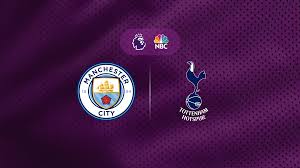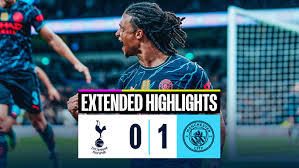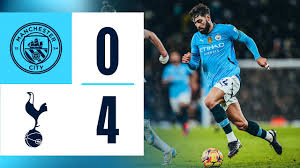
Introduction
Few fixtures in modern English football carry as much tactical intrigue, drama, and unpredictability as Manchester City vs Tottenham Hotspur. What was once a relatively ordinary Premier League encounter has, over the past decade, transformed into one of the most anticipated clashes in English football. The rise of Manchester City as a powerhouse under Abu Dhabi ownership and Tottenham’s evolution into a competitive side under managers like Mauricio Pochettino, José Mourinho, and now Ange Postecoglou, has given this fixture renewed significance.
The rivalry is not traditional in the same way as City vs United or Tottenham vs Arsenal, but their frequent battles in the Premier League, domestic cups, and even the UEFA Champions League have cultivated a competitive edge. Each encounter has offered drama: last-minute goals, tactical masterclasses, VAR controversies, and unforgettable moments etched into the collective memory of football fans worldwide.
This article takes a deep dive into the history, tactics, iconic matches, and future of this fixture. We will explore the contrasting styles of both clubs, analyse their head-to-head battles, and look at how Manchester City vs Tottenham has become one of the Premier League’s modern classics.
Historical Background
Early Encounters
Tottenham Hotspur, founded in 1882, and Manchester City, founded in 1880 (originally as St. Mark’s), first met in the early 20th century. For decades, both sides were traditional English clubs with sporadic success. Spurs enjoyed glory in the 1960s, becoming the first English club to win a European trophy (the Cup Winners’ Cup in 1963), while City had their golden period in the late 1960s and early 1970s, winning the league, FA Cup, and European honours.
In the per-Premier League era, their matches were competitive but lacked the headline-grabbing weight of other rivalries. Spurs were often seen as entertainers, and City, though passionate, lacked consistent dominance.
The Premier League Era
When the Premier League was founded in 1992, Spurs were considered one of the traditional “big clubs,” while City struggled with relegation battles and even slipped down to the third tier in the late 1990s. During this period, Spurs usually had the upper hand in the fixture.
That dynamic shifted dramatically after the 2008 takeover of Manchester City by Sheikh Mansour’s Abu Dhabi United Group. City began to invest heavily in world-class players and managers, and by the 2010s, they had become one of the most dominant forces in English football. Tottenham, meanwhile, grew under Pinochet, securing Champions League football consistently and building a reputation as a high-pressing, attacking side.
This clash between City’s wealth-driven project and Spurs’ more organic development under a progressive coach made for fascinating contests throughout the 2010s.
Tactical Styles
Manchester City
Under Pep Guardian, Manchester City have established themselves as arguably the most tactically sophisticated team in the world. Gladiola’s style is defined by:
- Positional Play (Juego de Posición): Players maintain strict spacing to create passing triangles and overloads.
- High Pressing: City press intensely to recover the ball quickly after losing it.
- Control of Possession: City often dominate possession with over 60–70% in most matches.
- Fluid Attacking: Wingers stay wide, midfielders rotate, and strikers interchange to pull apart defensive blocks.
Guardiola has also adapted in recent seasons, employing inverted full-backs (e.g., João Cancelo, now John Stones in midfield roles) and a more direct approach with a powerful number nine in Erling Haaland.
Tottenham Hotspur
Spurs’ style has shifted dramatically under different managers:
- Mauricio Pochettino (2014–2019): High press, vertical transitions, and dynamic attacking football.
- José Mourinho (2019–2021): Pragmatic, counter-attacking football with deep defensive blocks.
- Antonio Conte (2021–2023): Wing-back systems, defensive organisation, and direct attacking through Kane and Son.
- Ange Postecoglou (2023–present): High-risk, high-reward football emphasizing front-foot attacking, aggressive pressing, and fluid positional play.
Tottenham’s adaptability has made them a difficult opponent for City. Spurs are one of the few clubs to repeatedly frustrate Guardiola, often thriving on the counter-attack.
Iconic Matches

1. Tottenham 1–0 Manchester City (May 2010)
This match is historic for Tottenham. A Peter Crouch header sealed victory at the Jihad and confirmed Spurs’ place in the Champions League for the first time in their history. Ironically, it came against City, who were also competing for that spot. This was a symbolic win that marked Spurs’ arrival on the European stage.
2. Manchester City 4–3 Tottenham (April 2019, Champions League Quarterfinal Second Leg)
Arguably the most iconic clash between the two sides. Spurs came into the second leg with a 1–0 lead from the first leg. The match exploded into chaos with five goals in the first 21 minutes. City thought they had won it late with a Ahem Sterling goal, but VAR ruled it out for offside. Spurs advanced on away goals, and this match is often cited as one of the greatest Champions League games ever.
3. Tottenham 2–0 Manchester City (February 2020)
Under Mourinho, Spurs delivered a classic counter-attacking performance. Despite City dominating possession, goals from Steven Bergwijn and Son Heung-min gave Spurs a famous victory. It epitomized Mourinho’s tactical ability to frustrate Guardiola.
4. Manchester City 2–3 Tottenham (February 2022)
A Premier League classic. Spurs, under Comte, stunned the Jihad with a dramatic late winner from Harry Kane. The match highlighted how City, despite their dominance, can be vulnerable to fast, clinical counter-attacks.
5. Tottenham 2–0 Manchester City (August 2021, First Match Without Harry Kane)
In the summer of 2021, Kane was heavily linked with a move to City. Ironically, Spurs beat City 1–0 in the first game of the season, thanks to a Son strike, showing their resilience even amid uncertainty.
Head-to-Head Record
Historically, Tottenham had the upper hand in this fixture, particularly before City’s takeover. However, since Gladiola’s arrival, City have closed the gap, though Spurs remain one of the few teams with a relatively good record against Gladiola’s City.
- All Competitions (as of 2023):
- Manchester City wins: ~67
- Tottenham wins: ~66
- Draws: ~36
The balance shows just how competitive this rivalry has become.

Key Players in the Fixture
For Manchester City
- Kevin De Bruyne: The creative heartbeat of City’s midfield, capable of breaking down Spurs’ defensive lines with incisive passes.
- Erling Haaland: A new weapon for City, his presence changes the dynamics of this fixture.
- Ruben Dias: Defensive leader tasked with handling Spurs’ counter-attacking threats.
- Phil Foden: His versatility and ability to drift between the lines often trouble Tottenham.
For Tottenham Hotspur
- Harry Kane (until 2023): The all-time top scorer for Spurs, Kane was City’s transfer target and a key figure in this fixture.
- Son Heung-min: Lightning-fast and lethal on the counter, Son has often been Spurs’ hero against City.
- Cristian Romero: The combative enter-back who relishes the battle against City’s attackers.
- James Maddison (since 2023): A creative outlet who can unlock City’s press with vision and technical skill.
Themes of the Rivalry
1. Contrasting Philosophies
City represent a heavily financed, meticulously planned football project, while Spurs often embody resilience, tradition, and moments of brilliance despite financial constraints. This contrast has given their battles a unique flavour.
2. VAR and Drama
From Sterling’s disallowed goal in 2019 to various penalty controversies, this fixture has been a magnet for dramatic VAR decisions.
3. Psychological Edge
Spurs have been a “bogey team” for City at times, especially at the Tottenham Hotspur Stadium, where Guardiola’s men often struggle.
4. Evolution of Managers
This fixture has pitted some of football’s greatest managerial minds against each other—Guardian vs Pinochet, Guardiola vs Mourinho, Guardiola vs Conte, and now Guardiola vs Postecoglou.
Future of the Fixture
With Harry Kane now at Bayern Munich (2023), Tottenham enter a new era. Yet under Postecoglou, they are rebuilding with attacking flair, making them an exciting opponent for City. Meanwhile, City continue to evolve under Guardiola, with Haaland spearheading their attack and a squad brimming with depth.
The fixture will remain one of the most watched in the Premier League, especially as Spurs aim to re-establish themselves as consistent title challengers and City seek to maintain domestic dominance while targeting European glory.
Conclusion
Manchester City vs Tottenham Hotspur is more than just a Premier League match—it’s a clash of philosophies, tactics, and ambitions. From the early days of their rivalry to iconic modern encounters in the Premier League and Champions League, this fixture has provided fans with unforgettable moments.
City represent dominance, control, and financial might, while Spurs embody resilience, counter-attacking brilliance, and the ability to upset the odds. Their head-to-head battles reflect not just footballing competition but the evolving nature of English football itself.
As both clubs continue to grow and adapt, the rivalry promises to deliver more drama, tactical intrigue, and unforgettable nights. Whether it’s a battle for points in the league or a decisive knockout clash in Europe, Manchester City vs Tottenham Hotspur has cemented itself as one of football’s modern classics.


